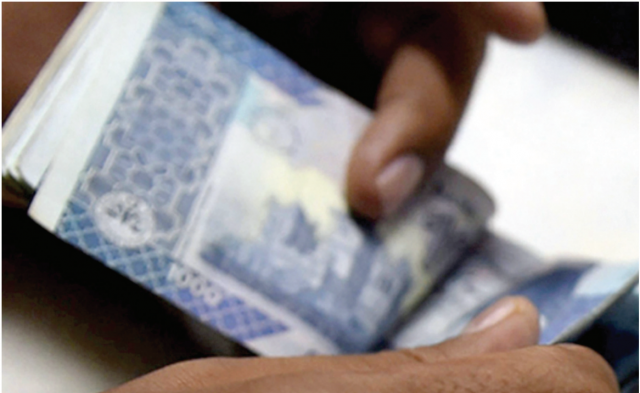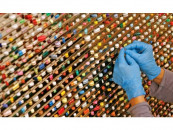Bank deposits grow 14% in March
Increase in cut-off yields of T-bills suggest another hike in benchmark interest rate

The bank deposit grew by a notable 14% over the past one year to Rs20.27 trillion in March, as the financial institutions mostly lent the deposits to the government which is in need of domestic borrowing to overcome its budgetary shortfall.
Banks’ lending to the government against acquisition of sovereign debt securities like T-bills and Pakistan Investment Bonds (PIBs) grew strongly by 20% year-on-year to Rs15 trillion in the month, according to Pakistan’s central bank’s data on Wednesday.
Keeping in view high demand for money from the government, the banks have continued to charge a higher rate of return on lending. The cut-off yields on three to 12-month T-bills surged by 55-70 basis points to 13.5-13.85% on Wednesday, the State Bank of Pakistan (SBP) reported.
Arif Habib Limited (AHL) Economist Sana Tawfik said that the government’s strong appetite for borrowing from commercial banks amid ban on it to borrow from the central bank, high inflation reading and delay in resumption of IMF loan programme drove commercial banks to charge high cut-off yields (rate of profit) on T-bills.
A notable increase in cut-off yields on T-bills suggests that banks foresee another hike in the benchmark interest rate in near future despite the fact that the central bank aggressively jacked up the rate by 250 basis points to two-year high at 12.25% in an emergency meeting earlier in the ongoing month of April.
“However, we (AHL house) anticipates status quo in the key policy rate at 12.25% in the next monetary policy decision scheduled for May 23,” she said.
“There is nothing left on the table,” she recalled SBP Governor Reza Baqir’s statement which he gave to Bloomberg TV after aggressively increasing the key policy rate in the recent emergency meeting.
The government acquired a total Rs614 billion through sale of three to 12-month bills against a target of Rs600 billion. The banks have offered a total 914 billion to lend to the government in the latest auction.
“The deposits have maintained growth momentum mainly due to increased inflow of workers’ remittances sent home by overseas Pakistanis and rupee depreciation against the US dollar,” she added.
The overseas Pakistanis sent record high workers’ remittances worth $2.8 billion in March. They translated to Rs518 billion at a rupee-dollar exchange rate at Rs185 per dollar. Part of the inflows goes into deposits every month.
The commercial banks’ investment to deposit ratio (IDR) – deposits lent to the government through acquiring government papers – surged aggressively 321 basis points to 73% in March compared to the same month of the last year, AHL reported.
The growth in IDR and cut-off yields both suggest that rulers are heavily relying on the domestic institutional financing to overcome budgetary shortfall, she said.
She recalled the government can no longer borrow from central banks under the IMF conditions and after amendments in SBP independence act’s rules.
Moreover, high inflation reading of 12.7% in March also supported commercial banks to charge a rate of profit on T-bills. The inflation has remained high due to higher global commodity prices mainly petroleum oil products which Pakistan imports to meet local demand.
The cut-off yields should go down after the sources of external (foreign) borrowing are again available to Pakistan once the IMF loan programme of $6 billion which is on hold temporarily is resumed soon, she said.
The commercial bank credit to the private sector also maintained uptrend. The banks advances rose 20% to Rs10.33 trillion in March.
With this, the advance to deposit ratio surged 241 basis points over the past one-year to 50% in March.
The growth in advances (credit to private sector) surged mainly due to introduction of concessionary and subsidized loan schemes for businesses and households, Ismail Iqbal Securities Head of Research Fahad Rauf said the other day.
The concessionary and subsidized loan schemes were including temporary economic refinance facility (TERF) for industries to expand their existing businesses and set up new ones, low cost house financing like Mera Ghar Mera Pakistan, export finance scheme (EFS) and long-term finance facility (LTFF) for import of machinery and supply of working capital, he said.
Published in The Express Tribune, April 21st, 2022.
Like Business on Facebook, follow @TribuneBiz on Twitter to stay informed and join in the conversation.



















COMMENTS
Comments are moderated and generally will be posted if they are on-topic and not abusive.
For more information, please see our Comments FAQ